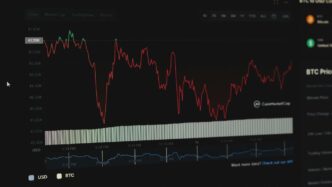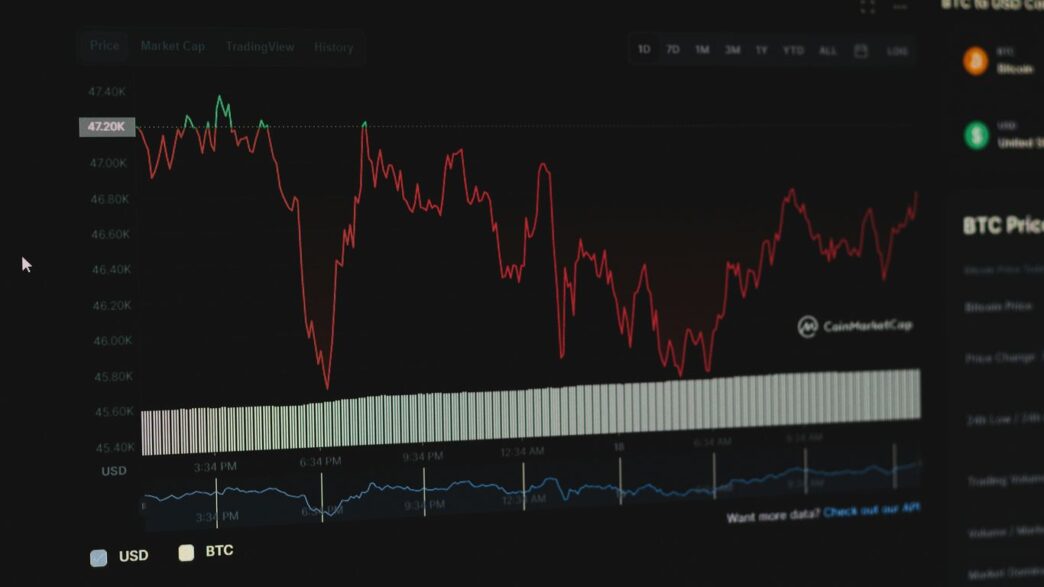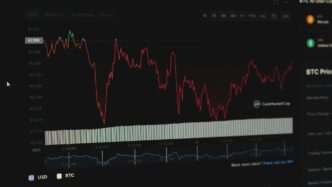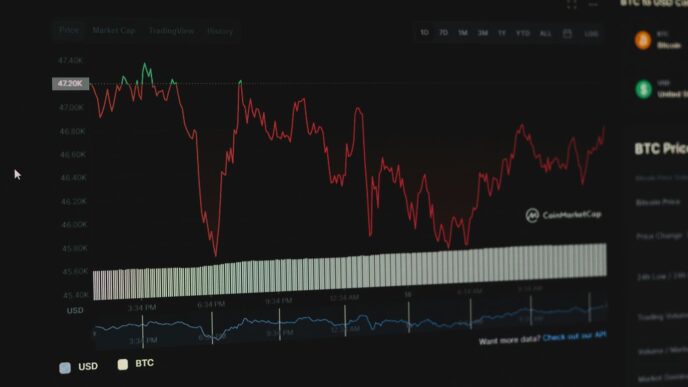So, you’re trying to figure out which mid-range chip is the king for 2025: the AMD Ryzen 5 7000 series or the Intel i5? It’s a common question, and honestly, both have their strong points. It’s not always a clear-cut winner; it really depends on what you plan to do with your computer. We’re going to break down the key differences to help you make the best choice for your needs, whether you’re a gamer, a creator, or just need a solid machine for everyday stuff. Let’s get into it.
Key Takeaways
- When it comes to gaming, especially at lower resolutions, Intel i5 processors often have an edge due to their strong single-core performance and higher Instructions Per Clock (IPC). This means they can handle games that rely heavily on one or two cores very well.
- For tasks like video editing, 3D rendering, and software development, the AMD Ryzen 5 7000 series usually pulls ahead. This is because they typically offer more cores and threads, which are super helpful for multitasking and complex workloads.
- Integrated graphics are a big difference. Intel’s Iris Xe graphics are decent for everyday use and light gaming, while most AMD Ryzen 5 7000 series CPUs need a separate graphics card to display anything. If you don’t plan on getting a dedicated GPU, Intel might be the way to go.
- Power consumption and heat can vary. Intel’s i5 chips sometimes have lower base power draw, which is good for energy-conscious builds, but overclocking can push power usage up. AMD Ryzen CPUs also offer overclocking potential, but you’ll need good cooling to manage the heat.
- When picking between AMD Ryzen 5 7000 series and Intel i5, think about your main use. Gamers might lean Intel for single-core speed, while content creators will likely benefit more from AMD’s multi-core power. For general use, both are solid choices, so consider other factors like price and platform features.
Core Architecture and Thread Count Showdown
When we’re looking at processors, the way they’re built on the inside, their architecture, and how many tasks they can juggle at once, known as thread count, really matters. It’s not just about raw numbers; it’s about how those numbers translate into what you actually do with your computer.
Hybrid Core Design Versus Traditional Cores
Intel has been playing around with a hybrid approach for a while now. Think of it like having two types of workers in your CPU. You’ve got the high-performance cores (P-cores) that are great for demanding tasks like gaming or heavy-duty software. Then you have the efficient cores (E-cores) that handle background stuff, like checking emails or updating your system, without using up too much power. This mix is supposed to give you the best of both worlds – power when you need it and efficiency when you don’t.
AMD, on the other hand, has mostly stuck with a more traditional design. All their cores are pretty much the same, designed to be powerful all-rounders. This can be simpler to understand, and for certain workloads, having all those identical powerful cores can be a real advantage. The choice between these two often comes down to what you prioritize: flexibility and power management, or consistent, high-performance cores across the board.
Core and Thread Count Implications
So, what does having more cores and threads actually mean? More cores generally mean your CPU can do more things simultaneously. Threads are like individual lanes on a highway for data; more threads mean more data can flow at the same time. For everyday tasks like browsing the web or writing documents, you probably won’t notice a huge difference between, say, 8 cores and 12 cores. But when you start doing things like editing video, running virtual machines, or compiling code, those extra cores and threads can make a big difference. Tasks that can be broken down into smaller pieces, called parallelizable tasks, really benefit from more cores.
Efficiency and Performance Core Balancing
This is where the hybrid versus traditional core debate really heats up. Intel’s P-cores and E-cores are designed to work together. The operating system and the CPU itself try to figure out which tasks should go to which type of core. For example, a game will likely run on the P-cores for maximum speed, while background music playback might be handled by the E-cores to save energy. AMD’s approach, with all cores being similar, means they’re all capable of high performance. This can lead to simpler scheduling for software, but it might mean that even simple background tasks are using up more power than they would on an E-core. It’s a balancing act between raw power and smart power usage.
Clock Speed Dynamics and Performance Impact
When we talk about how fast a computer feels, clock speed is a big part of the story. It’s basically how many cycles a processor can churn through in one second, measured in Gigahertz (GHz). Think of it like the engine’s RPMs in a car – higher generally means more power, but it’s not the whole picture.
Both AMD’s Ryzen 5 7000 series and Intel’s i5 processors for 2025 are pretty zippy. They often have similar base clock speeds, but where things get interesting is how they handle those speeds under different loads.
Base Frequency Versus Boost Performance
Every CPU has a base clock speed, which is its steady, everyday pace. But when you ask it to do something demanding, like opening a big application or playing a game, it can kick into a higher gear – that’s the boost speed. This is where you see those numbers jump up, sometimes quite a bit. For example, a CPU might have a base of 3.5 GHz but be able to boost up to 5.1 GHz for short bursts.
- AMD Ryzen 5 7000 Series: Often features strong single-core boost clocks, which is great for tasks that rely on one core working hard.
- Intel i5 (14th Gen/Raptor Lake Refresh): Also boasts impressive boost frequencies, sometimes reaching higher peak speeds than AMD in certain scenarios.
It’s important to remember that these boost speeds aren’t always sustained. The CPU will only boost as high and as long as its thermal and power limits allow.
Impact of Clock Speed on Multitasking
Multitasking is where things get a bit more complex. While a higher clock speed on a single core helps that one task fly, handling multiple tasks at once is more about the number of cores and how efficiently they can switch between jobs. However, if those multiple tasks can utilize higher clock speeds, then a CPU with better boost capabilities can still offer a smoother experience.
- More Cores: Generally better for running many applications simultaneously without slowdown.
- Higher Boost Clocks: Can help when multiple applications are active but not all are maxing out their cores.
- Efficient Core Management: How well the CPU switches between performance and efficiency cores (on Intel’s hybrid designs) plays a role.
Sustained Performance Through Frequency Tuning
What happens when a task needs a lot of processing power for an extended period? That’s where sustained performance comes in. A CPU’s ability to maintain high clock speeds without overheating or hitting power limits is key. This is often influenced by the processor’s Thermal Design Power (TDP) and the cooling solution you have in your PC.
- TDP: A higher TDP often means the CPU can draw more power and potentially sustain higher clock speeds for longer.
- Cooling: A good cooler is essential. It allows the CPU to stay within its thermal limits, preventing it from throttling (slowing down) to protect itself.
- Motherboard VRMs: The power delivery system on your motherboard also matters for stable, sustained power to the CPU.
While peak boost numbers are flashy, it’s the sustained clock speeds during demanding workloads that often make the real difference in day-to-day use and heavy tasks.
Integrated Graphics Capabilities
When you’re building a PC or looking at pre-built options, especially in the mid-range like the Intel Core i5 and AMD Ryzen 5 series, the graphics processing unit (GPU) that’s built right into the CPU, known as integrated graphics, can be a big deal. It’s not always about having a separate, powerful graphics card. For a lot of people, the integrated graphics handle everything they need.
Intel Iris Xe Graphics Performance
Intel’s newer i5 processors, particularly those from the 11th generation onwards, come equipped with Iris Xe graphics. These have been a pretty significant step up from older Intel integrated solutions. They’re designed to offer a decent experience for everyday tasks, light gaming, and media consumption. You can expect them to handle things like web browsing, office applications, and watching videos without any hiccups. For some less demanding games, you might even get playable frame rates, especially if you’re okay with lower settings. The Iris Xe graphics are a solid choice for users who prioritize power efficiency and don’t plan on playing the latest AAA titles.
AMD Vega Graphics for Everyday Tasks
AMD’s Ryzen processors, especially those with a ‘G’ suffix like the Ryzen 5 5600G, feature integrated graphics based on their Vega architecture. These are often referred to as APUs (Accelerated Processing Units) because they pack a good amount of graphics punch for an integrated solution. They’re known for being quite capable for general computing and are often praised for their performance in esports titles and other lighter games. If you’re looking for a system that can handle some casual gaming alongside your daily work, AMD’s Vega graphics are definitely worth considering. They’re also pretty good for basic photo editing and video playback.
When Discrete Graphics Are Essential
Now, while both Intel’s Iris Xe and AMD’s Vega graphics have improved a lot, they still have their limits. If you’re serious about gaming, especially with high frame rates or at higher resolutions like 1440p or 4K, you’re going to need a dedicated graphics card. Similarly, for demanding professional tasks like 3D rendering, complex video editing, or running specialized design software, a discrete GPU is pretty much a must-have. These integrated solutions are great for saving money and space, but they can’t replace the raw power of a dedicated graphics card for high-end performance. For 4K gaming, midrange processors like the AMD Ryzen 5, Intel Core i5, Ryzen 7, or Core i7 are recommended, but they still benefit greatly from a discrete GPU. check out CPU recommendations.
Here’s a quick look at how they generally stack up:
| Feature | Intel Iris Xe (11th Gen+) | AMD Vega (Ryzen ‘G’ Series) |
|---|---|---|
| Everyday Use | Excellent | Excellent |
| Light Gaming | Good | Very Good |
| Esports Titles | Fair to Good | Good to Very Good |
| Video Playback | Excellent | Excellent |
| Power Efficiency | Very Good | Good |
So, for many users, the integrated graphics on these Ryzen 5 and Core i5 chips are more than enough. But if your needs go beyond basic computing and casual gaming, you’ll want to budget for a separate graphics card.
Gaming Performance: Single-Core Dominance
When it comes to gaming, especially at higher resolutions where the GPU does most of the heavy lifting, the CPU’s role often boils down to how fast it can process individual frames. This is where single-core performance really shines. While more cores are great for multitasking and heavy productivity tasks, many games still rely heavily on one or a few cores to push out those high frame rates.
For gamers, this means that a CPU with strong single-core speed and good Instructions Per Clock (IPC) can often outperform a CPU with more cores but lower single-core speeds. It’s not just about raw clock speed; it’s about how much work that core can do in each cycle. This is why you’ll often see CPUs with fewer, but faster, cores performing exceptionally well in gaming benchmarks.
The Role of IPC in Gaming
IPC, or Instructions Per Clock, is a measure of how much work a CPU core can do in a single clock cycle. Think of it like this: if two people are digging holes, and one person can dig 10 holes per hour (high IPC) and the other can dig 5 holes per hour (low IPC), the first person is more efficient, even if they’re both working at the same speed (clock speed). In gaming, higher IPC means the CPU can process game logic, physics, and prepare data for the GPU more quickly, leading to smoother gameplay and higher frame rates. Both AMD and Intel have been pushing IPC improvements with each new generation, and it’s a constant battle for the top spot.
High Frame Rates in Demanding Titles
In games that are particularly CPU-intensive, or when aiming for extremely high refresh rates (like 144Hz or 240Hz), the difference between CPUs with strong single-core performance becomes very noticeable. Titles like competitive shooters or simulation games often benefit the most. While a powerful GPU is still king for visual fidelity, a weak CPU can become a bottleneck, preventing your graphics card from reaching its full potential. This is where the Ryzen 5 7000 series and Intel’s i5 offerings for 2025 will be put to the test, as they aim to provide that snappy, responsive gaming experience.
Intel’s Advantage in Low-Resolution Gaming
Historically, Intel has often held a slight edge in pure single-core performance, which can translate to better frame rates in games when playing at lower resolutions (like 1080p) or when paired with a less powerful GPU. At these settings, the CPU is more likely to be the limiting factor. While AMD has closed the gap significantly, and in some cases even surpassed Intel, it’s worth noting that Intel’s architecture often excels in scenarios that heavily tax a single core. This can be a deciding factor for esports enthusiasts or those building a budget gaming rig where every frame counts.
Content Creation: Multi-Core Powerhouse
When you’re diving into tasks like video editing, 3D rendering, or even complex software development, the number of cores and threads your CPU has really starts to matter. It’s not just about raw speed anymore; it’s about how many things your processor can juggle at once. This is where AMD’s Ryzen lineup, especially their higher-end chips, often shines.
AMD’s Superior Multi-Core Advantage
For a long time, AMD has been pushing the envelope with core counts, and that trend continues. While Intel has adopted a hybrid approach with performance and efficiency cores, AMD has largely stuck to a more traditional, all-performance-core design for its mainstream and high-end desktop CPUs. This often translates to more raw processing power for heavily threaded applications. For instance, when you look at benchmarks for tasks that can use all available cores, like rendering a complex scene in Blender or encoding a long video file, AMD’s chips with higher core counts frequently pull ahead. It’s not always about the absolute fastest clock speed; it’s about having enough workers (cores) to get the job done efficiently. This focus on core density means that for professionals who spend hours rendering or compiling code, the Ryzen processors can offer a significant time saving, which is money saved in a professional context. You can see how AMD’s Ryzen 9 7950X, with its 16 cores and 32 threads, consistently outperforms many of its competitors in these demanding multi-threaded scenarios. This makes it a strong contender for anyone whose workflow involves heavy parallel processing. Check out the latest Ryzen 9000 CPUs for more on AMD’s current offerings.
Video Editing and 3D Rendering Workloads
Think about editing a 4K video with multiple effects layered on top, or a 3D artist working on a detailed model. These aren’t simple tasks. They require the CPU to process vast amounts of data simultaneously. Video editing software, for example, benefits immensely from more cores when rendering previews, applying color grading, or exporting the final video. Similarly, 3D rendering applications are designed to split complex calculations across as many cores as possible. A CPU with more cores can handle these tasks much faster, reducing wait times and allowing for a more fluid creative process. It’s the difference between waiting an hour for a render to finish or just a few minutes. This is particularly noticeable in professional suites like Adobe Premiere Pro, DaVinci Resolve, or Autodesk Maya, where performance scales directly with core count.
Software Development and Task Parallelism
For software developers, the benefits of a multi-core powerhouse are just as significant, though perhaps in different ways. Compiling large codebases, running virtual machines, or managing multiple development environments simultaneously all demand substantial processing power. A CPU with a high core and thread count can significantly speed up compilation times, which is a huge productivity booster for developers. Imagine compiling a massive project in minutes instead of half an hour. Furthermore, running multiple virtual machines for testing different operating systems or applications becomes much more feasible and responsive on a CPU with ample cores. This ability to handle parallel tasks efficiently means developers can test more, build faster, and generally be more productive without their system bogging down. It’s about having the horsepower to run all your tools and processes smoothly at the same time.
Thermal Design Power and Overclocking Potential
When you’re looking at CPUs, especially for a build in 2025, you’ve got to think about how much heat they make and if you can push them harder. This is where Thermal Design Power (TDP) and overclocking come into play. It’s not just about raw speed; it’s also about how much juice the chip needs and how well you can keep it cool.
TDP Ranges and Power Consumption
Both AMD’s Ryzen 5 7000 series and Intel’s Core i5 processors have different TDP ratings, which basically tells you the maximum amount of heat a chip is expected to generate under a typical workload. This is a good indicator of power draw, too.
- AMD Ryzen 5 7000 Series: These chips generally sit in a sweet spot, often ranging from 65W to 105W. This means they’re pretty efficient, offering solid performance without demanding a massive power supply or a super-beefy cooler right out of the box. For example, the Ryzen 5 7600X has a TDP of 105W.
- Intel Core i5 (13th/14th Gen): Intel’s i5 lineup can be a bit more varied. While some models might have a base TDP around 65W, their higher-end or
Benchmarking and Real-World Application Tests

So, how do these chips actually stack up when you put them to the test? It’s not just about looking at the spec sheet, right? We need to see what they can do in real scenarios. This is where benchmarking comes in, and it’s a pretty big deal for figuring out which CPU is actually going to be better for what you do.
UserBenchmark and Cinebench Comparisons
When we talk about benchmarks, Cinebench is usually one of the first ones that comes up. It’s a popular tool that tests how well a CPU can render a 3D image, and it gives you scores for both single-core and multi-core performance. This is super helpful because it gives you a good idea of how the processors will handle tasks that rely on just one core (like some games) versus tasks that can use all the cores you’ve got (like video editing).
We also see tools like UserBenchmark, which tries to give a more general overview by testing a bunch of different things. It’s good for a quick look, but sometimes it can be a bit controversial because it tries to average out a lot of different performance metrics. Still, it’s a common way people compare CPUs, and you can find tons of results online to see how the Ryzen 5 7000 series and Intel i5 chips compare. Generally, Cinebench tends to show AMD’s Ryzen chips pulling ahead in multi-core tasks, while Intel often shows strong single-core performance.
PugetBench for Professional Application Insights
For those of you who do more serious work, like video editing, graphic design, or even software development, you’ll want to look at benchmarks that mimic those workloads. That’s where something like PugetBench comes in. It’s designed to test how CPUs perform in specific professional applications, like Adobe Premiere Pro or After Effects. This is way more telling than a generic benchmark if you’re trying to figure out which chip will make your workflow smoother.
These tests can show you things like:
- How quickly a CPU can export a video file.
- How well it handles complex visual effects.
- The responsiveness of the application when you’re editing or multitasking.
Looking at these results can really help you decide if the extra cores on an AMD chip are worth it for your specific creative tasks, or if Intel’s strong single-core speed is enough for your needs.
Interpreting Benchmark Results for Users
Okay, so you’ve got all these numbers from Cinebench, UserBenchmark, and PugetBench. What does it all mean for you? It’s easy to get lost in the data, but the main thing is to match the benchmark to your own use case. If you’re primarily a gamer, focus on the single-core scores and gaming-specific benchmarks. If you’re a content creator, those multi-core and application-specific scores are going to be way more important. Don’t just pick the CPU with the highest overall score; pick the one that’s best for the stuff you actually do. It’s also smart to check out a CPU benchmark performance hierarchy to see where these processors generally sit relative to others on the market. Remember, benchmarks are a guide, not the absolute final word on performance.
Memory Compatibility and Platform Features

When you’re building a new PC or upgrading, the motherboard and RAM are super important. They’re like the foundation and the highway system for your computer’s brain, the CPU. Let’s break down what you need to know about memory and the platforms these CPUs run on.
DDR4 and DDR5 RAM Support
This is a big one. Both the AMD Ryzen 7000 series and the latest Intel Core i5 processors are moving towards DDR5 RAM. It’s faster, has more bandwidth, and generally offers better performance, especially in memory-intensive tasks. However, some motherboards and CPUs might still support DDR4. This can be a cost-saving option if you’re reusing older DDR4 sticks or want to keep the build budget down. Just be aware that you can’t mix DDR4 and DDR5 on the same board – it’s one or the other.
- AMD Ryzen 7000 Series: Primarily uses DDR5. Some older Ryzen platforms (like AM4) stick with DDR4, but for the 7000 series, DDR5 is the way to go. This means you’ll need a new motherboard and new RAM if you’re coming from an older system.
- Intel Core i5 (12th Gen and newer): Intel has been a bit more flexible. Some motherboards for these chips support DDR4, while others are exclusively DDR5. This gives you a bit more choice, but you need to check the specific motherboard model carefully.
The shift to DDR5 is pretty much the standard now for new builds, offering a noticeable performance bump.
PCIe Lane Integration and NVMe Speeds
PCIe lanes are like dedicated lanes on a highway that connect your CPU to other components, like your graphics card and storage drives. More lanes and a newer PCIe version mean faster data transfer. This is especially important for super-fast NVMe SSDs, which can dramatically cut down loading times for games and applications.
- AMD: Ryzen 7000 series CPUs offer PCIe 5.0 support, which is the latest and fastest standard. This means you can get the absolute best speeds out of the newest PCIe 5.0 NVMe SSDs.
- Intel: Intel’s recent i5 processors also support PCIe 5.0, often on the primary graphics card slot and sometimes for an M.2 slot as well. The number of lanes and their configuration can vary depending on the specific CPU and motherboard chipset.
Socket Types and Motherboard Ecosystems
This is where things get a bit technical, but it’s crucial. The CPU socket is the physical connector on the motherboard where the processor sits. Different CPU generations use different sockets, and you can’t just jam a new CPU into an old socket.
- AMD: The Ryzen 7000 series uses the AM5 socket. This is a newer platform, and it’s designed to support future upgrades within the AM5 ecosystem for a while, which is good news for longevity. Older Ryzen CPUs used the AM4 socket, which has a massive range of motherboards available, but AM4 doesn’t support DDR5 or PCIe 5.0.
- Intel: Intel tends to change sockets more frequently. For example, 12th, 13th, and 14th Gen Core processors use the LGA 1700 socket. If you have a motherboard with LGA 1700, you might be able to upgrade between these generations, but you’ll need to check for BIOS updates. For the latest Intel chips, you’ll be looking at LGA 1700 or whatever the next generation brings.
Choosing the right motherboard is key because it dictates your RAM type, expansion options, and overall system compatibility. It’s not just about the CPU; the platform matters a lot.
So, Which One Should You Pick?
Alright, so we’ve looked at how the AMD Ryzen 5 and Intel i5 stacks up. It’s not a simple ‘this one is better’ situation, you know? If you’re all about gaming, especially those games that really lean on one fast core, Intel’s i5 often pulls ahead. It just handles those fast-paced moments really well. But if you’re doing stuff like editing videos, making 3D models, or coding big projects, the Ryzen 5 usually has the edge. It’s got more cores to chew through those heavy tasks. For just everyday computer stuff, like browsing the web or using office apps, both are pretty solid. Honestly, the choice often comes down to what you’ll be doing most, how much you want to spend, and maybe even what brand you just like more. Both AMD and Intel are putting out some really good chips these days, so you can’t really go wrong either way.
Frequently Asked Questions
Which processor is usually better for gaming, AMD Ryzen 5 or Intel i5?
For gaming, especially games that rely heavily on one fast core, the Intel i5 often has an edge. This is because its cores can do more work in the same amount of time, which is great for getting high frame rates, particularly at lower screen resolutions where the processor is the main bottleneck.
Which processor is better for tasks like video editing or 3D rendering?
For tasks that involve a lot of simultaneous work, like video editing or 3D rendering, the AMD Ryzen 5 usually performs better. This is because Ryzen processors typically have more cores and threads, allowing them to handle many tasks at once more efficiently.
Do these processors have built-in graphics, or do I need a separate graphics card?
Some AMD Ryzen processors (often labeled ‘G’ series) and most Intel i5 processors come with built-in graphics, called integrated graphics. These are good for everyday tasks, watching videos, and very light gaming. However, for serious gaming or demanding creative work, you’ll still need a separate, more powerful graphics card.
What does ‘hybrid core design’ mean for Intel processors?
Intel’s hybrid core design means the processor has two types of cores: ‘Performance’ cores for heavy tasks and ‘Efficiency’ cores for lighter tasks. This helps balance power usage and performance, making the computer good at both demanding jobs and everyday activities without using too much energy.
How does clock speed affect performance?
Clock speed, measured in GHz, tells you how many cycles a processor can complete in one second. A higher clock speed generally means the processor can work faster. Both AMD Ryzen 5 and Intel i5 processors have similar clock speeds, but they also use technologies like ‘Boost’ to temporarily increase speed for demanding tasks.
What is TDP, and why is it important?
TDP stands for Thermal Design Power. It’s a measure of how much heat a processor can produce under normal use. Processors with lower TDPs use less power and generate less heat, which can be important for smaller computers or if you want a quieter system. Higher TDPs often mean more power and potentially more heat, but also more performance.














